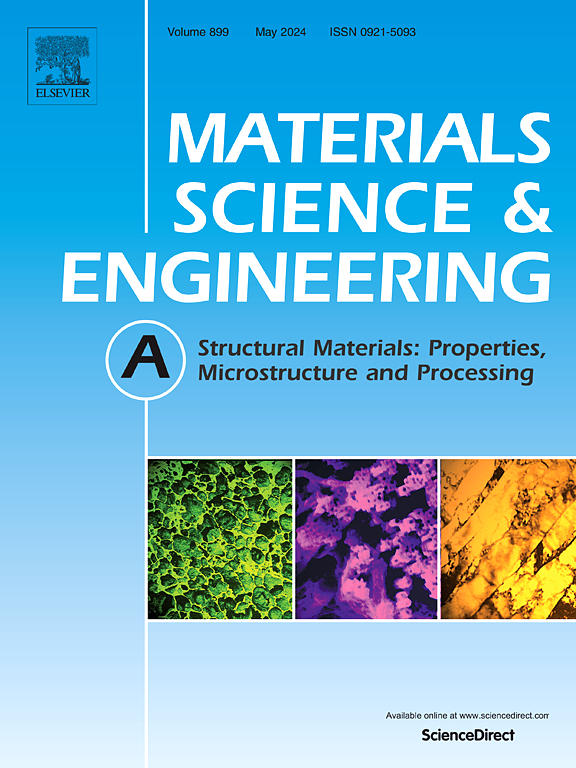Creep behavior and microstructure evolution of a novel Ni-Co-based superalloy with long-life designed for high temperature application
IF 6.1
2区 材料科学
Q1 MATERIALS SCIENCE, MULTIDISCIPLINARY
引用次数: 0
Abstract
To provide guidance for the design of high-temperature and long-life wrought superalloys, the microstructure evolution and deformation behavior at high temperature and long-term creep of a novel Ni-Co-based superalloy was investigated. The results showed that the formation of precipitate free zones (PFZ) at grain boundaries (GBs) during long-term creep would facilitate the nucleation of micropores along with the microporous aggregation fracture. Subsequently, the evolution behavior of GBs during the high-temperature and long-term creep was characterized using EBSD, EDS and TEM, revealed the underlying mechanism of PFZ formation. It is mainly attributed to strain-induced GBs migration, which is governed by diffusion. Additionally, dynamic recrystallization (DRX) within PFZs was observed during long-term creep. The DRX mechanism in PFZ is a continuous-DRX with progressive rotation of the crystal lattice. Besides, the secondary γ′ phases within the grain exhibit evidence of rafting, which is closely associated with the deformation mechanism within the grain, primarily attributed to the abundant dislocations surrounding the γ′ phases serving as efficient pathways for elements diffusion.
一种新型高温长寿命镍钴基高温合金的蠕变行为和显微组织演变
为指导高温长寿命变形高温合金的设计,研究了一种新型镍钴基高温合金的组织演变和高温长期蠕变变形行为。结果表明:在长时间蠕变过程中,晶界处无析出带(PFZ)的形成有利于微孔的成核和微孔的聚集断裂;随后,利用EBSD、EDS和TEM对GBs在高温长期蠕变过程中的演化行为进行了表征,揭示了PFZ形成的潜在机制。这主要归因于菌株诱导的GBs迁移,该迁移受扩散控制。此外,在长期蠕变过程中观察到pfz内的动态再结晶(DRX)。PFZ中的DRX机制是一个连续的DRX机制,伴随着晶格的递进旋转。此外,晶粒内的次级γ′相表现出漂流的迹象,这与晶粒内的变形机制密切相关,主要归因于γ′相周围大量的位错是元素扩散的有效途径。
本文章由计算机程序翻译,如有差异,请以英文原文为准。
求助全文
约1分钟内获得全文
求助全文
来源期刊

Materials Science and Engineering: A
工程技术-材料科学:综合
CiteScore
11.50
自引率
15.60%
发文量
1811
审稿时长
31 days
期刊介绍:
Materials Science and Engineering A provides an international medium for the publication of theoretical and experimental studies related to the load-bearing capacity of materials as influenced by their basic properties, processing history, microstructure and operating environment. Appropriate submissions to Materials Science and Engineering A should include scientific and/or engineering factors which affect the microstructure - strength relationships of materials and report the changes to mechanical behavior.
 求助内容:
求助内容: 应助结果提醒方式:
应助结果提醒方式:


